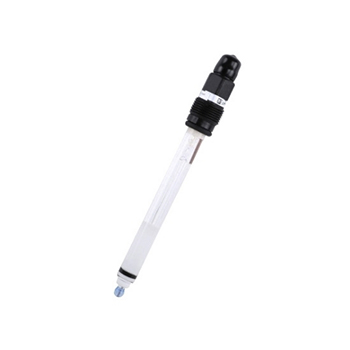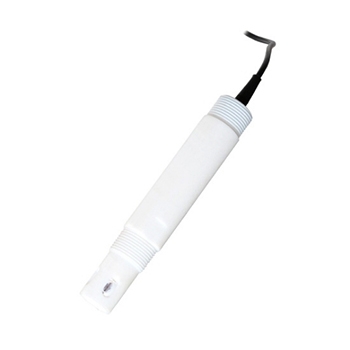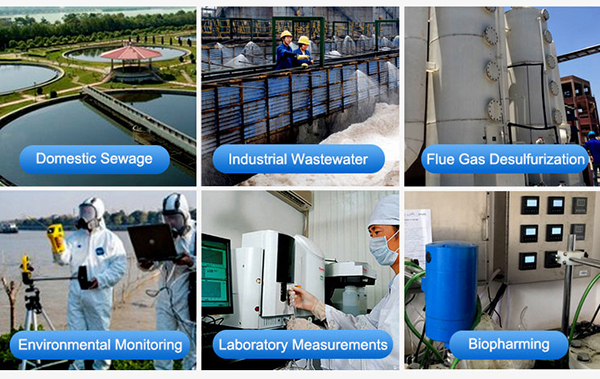Before using the pH electrode, it is very necessary to perform numerical calibration on it. The pH electrode calibration method refers to a method to make the measurement results of the pH electrode more accurate and reliable through a series of operations. Its main steps include cleaning the electrode, calibrating the electrode, and judging whether the electrode needs to be replaced.
pH electrode calibration process
The pH electrode has a wide range of applications and various types. Therefore, the instrument should be calibrated according to the time period specified in the manual during measurement. The calibration method adopts the two-point calibration method. First select two standard buffers: one is the pH7 standard buffer, and the second is the pH9 standard buffer or pH4 standard buffer.
- First use the pH7 standard buffer solution to position the electrometer, and then select the second standard buffer solution according to the acidity and alkalinity of the solution to be tested. If the solution to be tested is acidic, use a pH4 standard buffer; if the solution to be tested is alkaline, use a pH9 standard buffer. If it is a manually adjusted pH electrode, it should be operated several times in the two standard buffer solutions until it is no longer necessary to adjust its zero point and positioning (slope) knobs, and the pH electrode can accurately display the pH values of the two standard buffer solutions.
- The temperature of the standard buffer solution should be as close as possible to the temperature of the tested solution, and the positioning of the standard buffer solution should be as close as possible to the pH value of the tested solution. Or two-point calibration, try to make the pH value of the measured solution within the interval of the two standard buffer solutions. After calibration, the electrode immersed in the standard buffer solution should be rinsed with water, because the buffering effect of the buffer solution will cause measurement errors when it is brought into the measured solution.
- Thereafter, the zero and positioning knobs should not be moved during the measurement. If it is an intelligent pH meter, it does not need to be adjusted repeatedly, because the pH value of several standard buffer solutions has been stored inside it to choose from, and it can be automatically recognized and calibrated automatically. But pay attention to the choice of standard buffer and the accuracy of its preparation. The smart 0.01 grade pH meter generally has three to five standard buffer pH values in memory.
- Secondly, special attention should be paid to the temperature of the solution to be tested before calibration, so as to correctly select the standard buffer solution, and adjust the temperature compensation knob on the panel of the meter to make it consistent with the temperature of the solution to be tested. The pH value of the standard buffer solution is different at different temperatures. After the calibration work is completed, the instrument does not need to be calibrated again within 48 hours for frequently used pH electrodes. In case of any of the following situations, the instrument needs to be re-calibrated:
- The positioning or slope regulator is misoperated.
- After measuring over acid (pH<2) or over basic (pH>12) solutions.
- After changing the electrodes.
- When there is a large difference between the solution temperature and the calibration temperature.
- The electrode is exposed to the air for too long, such as more than half an hour.
- When the pH value of the measured solution is not in the middle of the solution selected during two-point calibration and is far away from pH 7
 .
.
- When recording the pH value of the tested solution, the temperature value of the tested solution should be recorded at the same time, because the pH value is meaningless without the temperature value. Although most pH electrodes have a temperature compensation function, it only compensates the response of the electrode, that is to say, it is only half-compensated, and does not perform temperature compensation on the measured solution at the same time, that is, full compensation.
- Any kind of acidity meter (pH electrode for strong acid) can only measure the pH value of the sample after being calibrated with the pH standard solution. For samples whose measurement accuracy is below 0.1pH, the instrument can be adjusted by the one-point accuracy method. Generally, a standard buffer solution of pH 6.86 or pH 7.00 is used. The accuracy of some instruments is only 0.2pH or 0.1pH, so the instrument is equipped with only one positioning adjustment knob.
The specific operation steps are as follows:
- Measure the temperature of the standard buffer solution, determine the pH value at this temperature, and adjust the temperature compensation knob to this temperature.
- Rinse the electrode with pure water and shake it dry.
- Dip the electrode into the buffer solution, shake it, and let it stand. After the reading is stable, adjust the positioning knob to make the instrument display the pH value of the standard solution.
- Take out the electrodes, and wash and dry them.
- Measure the temperature of the sample, and adjust the temperature compensation knob of the pH meter to this temperature value.
pH Electrode Storage Procedures
If the pH electrode is not in use, the glass bulb must be placed in a humid environment. If the glass bulb dehydrates, it will temporarily affect the performance.
The suggested saving steps are as follows:
- Short-term: Insert the electrode into 3.8 M KCl solution, do not store it in distilled water.
- Long-term: Fill the protective bottle with fresh 3.8 M KCl solution and insert the electrode. The O-ring of the protective bottle must seal in place and the cap must be hand-tight, and should not be stored in distilled water.

pH Electrode Cleaning Procedure
The following three cleaning procedures are particularly effective for polluted electrodes, almost 90% of the polluted deposits can be removed with detergent, warm water, and a soft brush.
- Washing pH Electrode Glass Bulbs
Wash with a warm, neutral detergent solution. Brush the glass pH electrode ball lightly with a soft brush, then wipe it with a clean cotton or cloth dipped in the solution, rinse it thoroughly with distilled water, and then soak it in a saturated KCl solution for at least 30 minutes.
- Inorganic sediment
Soak the glass bulb of the electrode in the dilute HCl solution for a few minutes (note: only the top of the glass bulb), then clean it with distilled water and immerse it in a 3.8M KCl solution for no less than 30 minutes.
Conclusion
During the calibration process, care should be taken to select a standard solution similar to the sample to ensure accurate calibration results. If the electrodes are aged or damaged, they need to be replaced. The correct pH electrode calibration method can ensure the accuracy and reliability of the measurement results, providing a strong guarantee for scientific research and industrial production.

